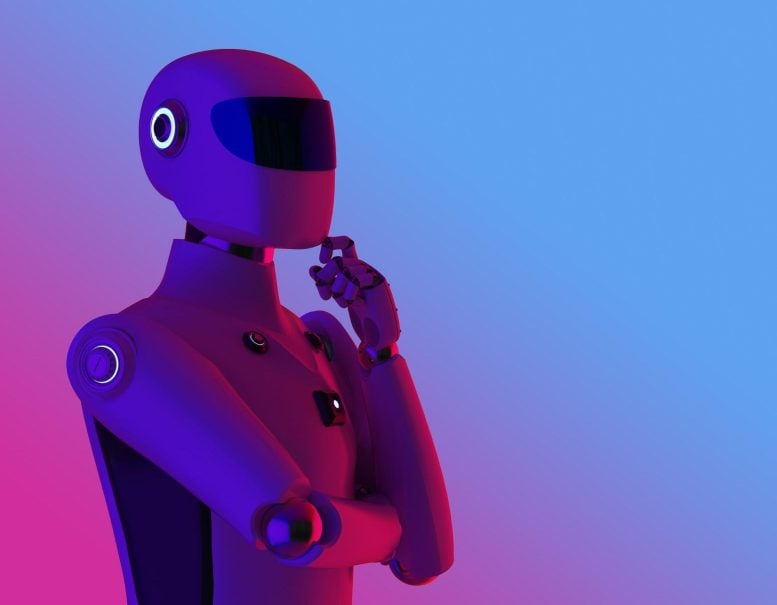
A new study utilizes compact neural networks to uncover the underlying mechanisms behind human decision-making.
Scientists have long studied how people and animals make decisions, often looking at how recent experiences and trial-and-error shape behavior. But traditional models may miss key aspects of how decisions are made, largely because they assume individuals always try to choose the most logical or beneficial option based on past outcomes.
In a new study, researchers took a different approach by using <span class="glossaryLink" aria-describedby="tt" data-cmtooltip="
” data-gt-translate-attributes=”[{"attribute":"data-cmtooltip", "format":"html"}]” tabindex=”0″ role=”link”>artificial intelligence to explore decision-making in a more realistic way. They created small artificial neural networks to examine what truly influences an individual’s choices, whether those decisions are effective or not.
“Instead of assuming how brains should learn in optimizing our decisions, we developed an alternative approach to discover how individual brains actually learn to make decisions,” explains Marcelo Mattar, an assistant professor in <span class="glossaryLink" aria-describedby="tt" data-cmtooltip="
” data-gt-translate-attributes=”[{"attribute":"data-cmtooltip", "format":"html"}]” tabindex=”0″ role=”link”>New York University’s Department of Psychology and one of the authors of the paper, which appears in the journal Nature. “This approach functions like a detective, uncovering how decisions are actually made by animals and humans. By using tiny neural networks—small enough to be understood but powerful enough to capture complex behavior—we’ve discovered decision-making strategies that scientists have overlooked for decades.”
Small Neural Networks, Big Insights
The study’s authors note that small neural networks—simplified versions of the neural networks typically used in commercial AI applications—can predict the choices of animals much better than classical cognitive models, which assume optimal behavior, because of their ability to illuminate suboptimal behavioral patterns. In laboratory tasks, these predictions are also as good as those made by larger neural networks, such as those powering commercial AI applications.
“An advantage of using very small networks is that they enable us to deploy mathematical tools to easily interpret the reasons, or mechanisms, behind an individual’s choices, which would be more difficult if we had used large neural networks such as the ones used in most AI applications,” adds author Ji-An Li, a doctoral student in the Neurosciences Graduate Program at the University of California, San Diego.
“Large neural networks used in AI are very good at predicting things,” says author Marcus Benna, an assistant professor of neurobiology at UC San Diego’s School of Biological Sciences. “For example, they can predict which movie you would like to watch next. However, it is very challenging to describe succinctly what strategies these complex <span class="glossaryLink" aria-describedby="tt" data-cmtooltip="
” data-gt-translate-attributes=”[{"attribute":"data-cmtooltip", "format":"html"}]” tabindex=”0″ role=”link”>machine learning models employ to make their predictions —such as why they think you will like one movie more than another one. By training the simplest versions of these AI models to predict animals’ choices and analyzing their dynamics using methods from physics, we can shed light on their inner workings in more easily understandable terms.”
Beyond the Lab: Real-World Applications
Understanding how animals and humans learn from experience to make decisions is not only a primary goal in the sciences, but, more broadly, useful in the realms of business, government, and technology. However, existing models of this process, because they are aimed at depicting optimal decision-making, often fail to capture realistic behavior.
Overall, the model described in the new Nature study matched the decision-making processes of humans, non-human primates, and laboratory rats. Notably, the model predicted decisions that were suboptimal, thereby better reflecting the “real-world” nature of decision-making—and in contrast to assumptions of traditional models, which are focused on explaining optimal decision-making. Moreover, the NYU and UC San Diego scientists’ model was able to predict decision-making at the individual level, revealing how each participant deploys different strategies in reaching their decisions.
“Just as studying individual differences in physical characteristics has revolutionized medicine, understanding individual differences in decision-making strategies could transform our approach to mental health and cognitive function,” concludes Mattar.
Reference: “Discovering cognitive strategies with tiny recurrent neural networks” by Li Ji-An, Marcus K. Benna and Marcelo G. Mattar, 2 July 2025, Nature.
DOI: 10.1038/s41586-025-09142-4
The research was supported by grants from the National Science Foundation (CNS-1730158, ACI-1540112, ACI-1541349, OAC-1826967, OAC-2112167, CNS-2100237, CNS-2120019), the Kavli Institute for Brain and Mind, the University of California Office of the President, and UC San Diego’s California Institute for Telecommunications and Information Technology/Qualcomm Institute.
Never miss a breakthrough: Join the SciTechDaily newsletter.
